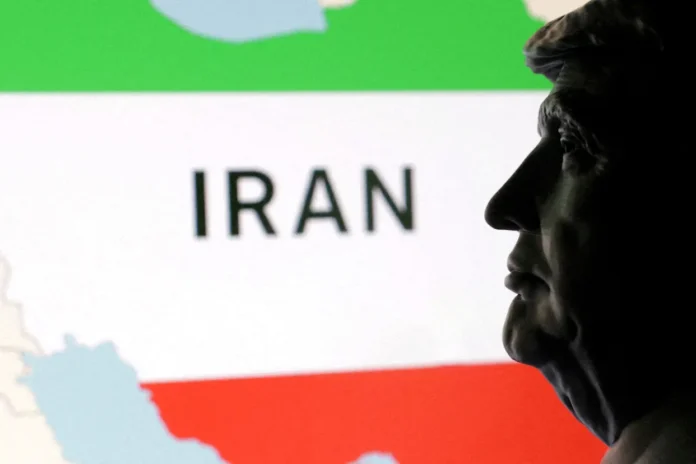A Strike Declared a Success, Then Quickly Challenged
President Donald Trump announced a spectacular success after the United States dropped fourteen 30,000-pound bunker buster bombs on three Iranian nuclear facilities. Trump declared, “Iran’s key nuclear enrichment facilities have been completely and totally obliterated,” presenting the strike as a total military victory. Within hours, multiple leaks from intelligence agencies suggested otherwise, questioning the actual impact of the strike. A preliminary Defense Intelligence Agency (DIA) report stated the attack “sealed off the entrances” to Fordow and Natanz but did not destroy the underground buildings. According to CNN, officials familiar with the DIA findings said, “The U.S. set them back maybe a few months, tops.”
Leaked Intelligence Appears Timed to Force Escalation
The DIA report had been marked as both “low confidence” and “preliminary,” yet it was leaked almost immediately to prominent media outlets. The assessment stated Iran’s uranium stockpile was moved before the strike and its centrifuges remained intact. By framing the strike as ineffective, the leak challenged Trump’s red line that Iran must never acquire nuclear weapons. One source quoted in the transcript said, “You did not destroy the nuclear weapons program… you have to re-engage in this conflict.” The leaks appeared carefully timed to shape policy outcomes rather than provide clarity about the operation.
White House Officials Slam the Narrative Shift
Defense Secretary Pete Hegseth and Secretary of State Marco Rubio responded with strong public condemnation of the leak and its coverage. Hegseth told reporters, “It was leaked because someone had an agenda to try to muddy the waters and make it look like this historic strike wasn’t successful.” He accused outlets like CNN and The New York Times of “cheering against Trump” and distorting the content of a “preliminary assessment.” Rubio referred to the individuals leaking information as “professional stabbers,” and added, “That’s the game these people play.” Both officials emphasized that the weapons hit their targets and framed the strikes as a military triumph, regardless of the leaked intelligence.
Israeli Statement Signals Outsourced Justification
In a rare and revealing move, the White House released a statement from the Israeli Atomic Energy Commission regarding the effectiveness of the Fordow strike. The release did not come from Israel’s own government channels but was distributed directly by Trump’s team. Israeli journalist Barak Ravid observed, “This is a highly unusual case of the White House releasing a statement on behalf of an Israeli security agency.” The Israeli statement claimed Fordow’s infrastructure had been “rendered inoperable” and its enrichment capabilities destroyed. This reliance on foreign intelligence, rather than the United States’ own assessments, raised further questions about who influences American policy on Iran.
A Familiar Pattern Emerges from Prior Military Campaigns
The pattern surrounding this leak mirrored strategies observed in prior military operations involving regime change or escalation. Initial airstrikes receive praise, then internal leaks quickly surface, discrediting the mission and calling for additional action. The transcript noted this dynamic clearly: “They’re trying to push a continued logic to war.” With Trump having already declared Iran must never possess a nuclear weapon, the leak forces the administration into a bind. Accepting the leaked findings would make further strikes seem unavoidable in order to uphold credibility.
Trump Allies See a Manipulated Information Environment
White House Press Secretary Karoline Leavitt said, “This alleged assessment is flat-out wrong and was classified as ‘top secret’ but was still leaked.” She characterized the leak as an effort to “demean President Trump and discredit the brave fighter pilots” involved in the mission. Trump also responded publicly, stating, “CNN is scum, MSDNC is scum, the New York Times is scum. They’re bad people, they’re sick.” Hegseth reinforced this perspective by asserting, “Given the 30,000 pounds of explosives… it was devastation underneath Fordow.” According to these officials, the leak served more as political sabotage than an honest reflection of battlefield outcomes.
The Public’s Reaction Does Not Follow Historical Trends
Despite claims of a successful mission, public polling did not favor the airstrikes, showing an unusual shift from past U.S. military actions. CNN’s Harry Enten remarked, “From a historical perspective, I am surprised that the net approval rating is so low on these strikes.” A Reuters poll showed net approval underwater by 11 points, while CNN’s poll showed a 12-point deficit. Compared to the 58-point positive rating for U.S. strikes on ISIS in 2014, these numbers reflect skepticism. The lack of a coherent justification and limited propaganda buildup may have weakened public support.
Israeli Goals Focused on Regime Destabilization
The transcript highlighted that Israel’s intentions extend beyond disabling nuclear facilities to long-term regime change in Iran. Trump himself stated, “Israel got hit very hard… they needed a break,” suggesting the ceasefire was not an end, but a pause. Steve Bannon expanded on this, saying, “They took this ceasefire… to save Israel,” indicating the operation exceeded Israeli capacity. With Israel lacking the means to complete its objectives alone, they relied heavily on American military power. This dynamic raises concerns that U.S. policy has become an extension of foreign strategic objectives.
Escalation Trap Set by Policy and Narrative
By dismantling the JCPOA early in his administration, Trump removed a key diplomatic mechanism for restraining Iranian nuclear development. His new position left him vulnerable to accusations of failure when military solutions did not fully resolve the problem. The leaked intelligence amplified this vulnerability, pressuring him to escalate or admit defeat. The transcript warned, “They still have some leverage to try to effectuate their outcome of total and complete war.” This strategy of pressuring through leaks and narrative manipulation places executive decision-making under relentless siege.
The Manufactured Consent for Conflict Deepens
The sequence of events has not emerged from honest confusion, but from orchestrated influence operations leveraging media, leaks, and foreign sources. Officials with direct involvement in the planning, such as Gen. Dan Caine, said, “Initial reviews found extremely severe damage and destruction.” Yet that did not stop certain factions from pushing the narrative that the strike had failed. As Pete Hegseth noted, “Every outlet has breathlessly reported on a preliminary assessment,” despite its acknowledged lack of verification. These disclosures function as deliberate efforts to create a sense of failure and justify renewed military action.
An Engineered Crisis with Familiar Architects
The events following the strike on Iranian nuclear sites demonstrate more than bureaucratic disagreement; they illustrate a well-worn pattern of manufactured crisis. Trump’s claim that the attack had been an “unbelievable victory” became instantly undermined by insiders with access and motive. The rapid and coordinated dissemination of a classified report, paired with Israeli messaging and American political theater, paints a picture of internal sabotage. Those who benefit from endless war, aligned with networks of ideological and institutional power, appear once again to be steering national decisions. If history is any guide, this moment reflects the beginning of a campaign, not the conclusion.

